In this article, we will show you how to install and configure Zabbix 6.2 with a PostgreSQL 15 database on Rocky Linux 9 in five minutes.
Before we start
For the purposes of this example, we will first switch SELinux mode to Permissive.
setenforce 0PostgreSQL installation
First, install the official PostgreSQL repositories and disable the default system PostgeSQL repositories.
dnf install -y https://download.postgresql.org/pub/repos/yum/reporpms/EL-9-x86_64/pgdg-redhat-repo-latest.noarch.rpm
dnf -qy module disable postgresqlAnd now install PostgreSQL, in this case it will be PostgreSQL 15.
dnf install -y postgresql15-serverNow all that’s left is to initialize the database and set up automatic startup.
/usr/pgsql-15/bin/postgresql-15-setup ignited
systemctl enable postgresql-15 --nowInstallation of Zabbix server and its components
We have the database installed, so let’s proceed with the installation of the Zabbix server and its components.
First, we will exclude any installation packages related to Zabbix from the EPEL repository, assuming it is installed.
We do this by adding the following line to the end of the file /etc/yum.repos.d/epel.repo:
[epel]
...
excludepkgs=zabbix*We will add the Zabbix repositories and clear the installation cache.
rpm -Uvh https://repo.zabbix.com/zabbix/6.2/rhel/9/x86_64/zabbix-release-6.2-3.el9.noarch.rpm
dnf clean allAnd then install all of the necessary Zabbix components.
dnf install zabbix-server-pgsql zabbix-web-pgsql zabbix-apache-conf zabbix-sql-scripts zabbix-agent2 zabbix-web-serviceFinally, enable all the necessary ports on the firewall.
firewall-cmd --permanent --add-service=http
firewall-cmd --permanent --add-port=10051/tcp
firewall-cmd --reloadDatabase initialization
In the next step, create a user for Zabbix in the database. You will be prompted to enter a password.
cd /tmp
sudo -u postgres createuser --pwprompt zabbixNext, create a database and import the default schema and data.
You will be asked to enter your password again. Use the password created in the previous step.
Attention! In older versions of Zabbix, this path is different, namely /usr/share/doc/zabbix-sql-scripts/ !
sudo -u postgres createdb -O zabbix zabbix
zcat /usr/share/zabbix-sql-scripts/postgresql/server.sql.gz | sudo -u zabbix psql zabbixTimescaleDB installation
Now let’s get down to installing TimescaleDB.
First add a repository.
tee /etc/yum.repos.d/timescale_timescaledb.repo <<EOL
[timescale_timescaledb]
name=timescale_timescaledb
baseurl=https://packagecloud.io/timescale/timescaledb/el/$(rpm -E %{rhel})/\$basearch
repo_gpgcheck=1
gpgcheck=0
enabled=1
gpgkey=https://packagecloud.io/timescale/timescaledb/gpgkey
sslverify=1
sslcacert=/etc/pki/tls/certs/ca-bundle.crt
metadata_expire=300
EOLNext, install TimescaleDB.
dnf install timescaledb-2-postgresql-15-2.10.3 timescaledb-2-loader-postgresql-15-2.10.3 -yWe will run the timescaledb-tune utility and pass a higher value for the maximum number of connections (--max-conns), which we will set to 125 for testing purposes.
This utility is used to adjust the default PostgreSQL settings for optimal performance and suitable parameter configuration for working with TimescaleDB.
Additionally, this utility, through an installation wizard, will help select the current and valid PostgreSQL configuration file and will set the automatic loading of TimescaleDB libraries.
Please answer “yes” (y) to all questions. Note that the automatic tuner assumes PostgreSQL is running on a standalone server, so parameter adjustments may be necessary.
timescaledb-tune --pg-config /usr/pgsql-15/bin --max-conns=125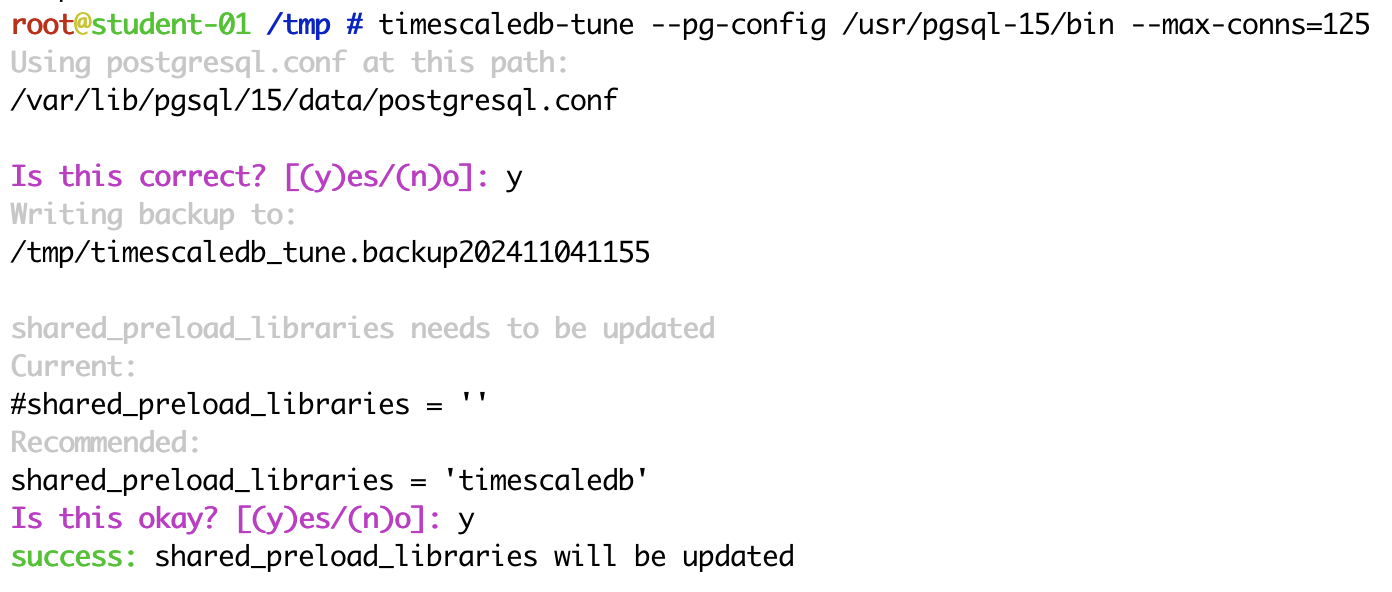
Následně restartujeme systémovou službu pro PostgreSQL:
systemctl restart postgresql-15.serviceThe only remaining step is to activate TimescaleDB.
Caution! In older versions of Zabbix, this path is different: /usr/share/doc/zabbix-sql-scripts/!
echo "CREATE EXTENSION IF NOT EXISTS timescaledb CASCADE;" | sudo -u postgres psql zabbix
cat /usr/share/zabbix-sql-scripts/postgresql/timescaledb.sql | sudo -u zabbix psql zabbixZabbix server configuration
Open the Zabbix server configuration file
nano /etc/zabbix/zabbix_server.confand adjust the individual parameters according to the following example.
DBPassword=<heslo do databáze>
StartReportWriters=1
WebServiceURL=http://localhost:10053/report
HANodeName=initMAXFinally, install Czech and Slovak language packs (optional), restart all related services and set them for automatic startup.
dnf install glibc-langpack-cs.x86_64 glibc-langpack-sk.x86_64
systemctl restart zabbix-server zabbix-web-service zabbix-agent2 httpd php-fpm
systemctl enable zabbix-server zabbix-web-service zabbix-agent2 httpd php-fpm
less /var/log/zabbix/zabbix_server.logZabbix frontend configuration
In the browser window, open the URL on which Zabbix is running and the installation wizard will welcome us. For example http://192.168.0.50/zabbix.
By clicking on the Next step button, move to the minimum requirements check page.

Everything is fine, so you can click on the Next step button and move to the next phase with the database connection settings.
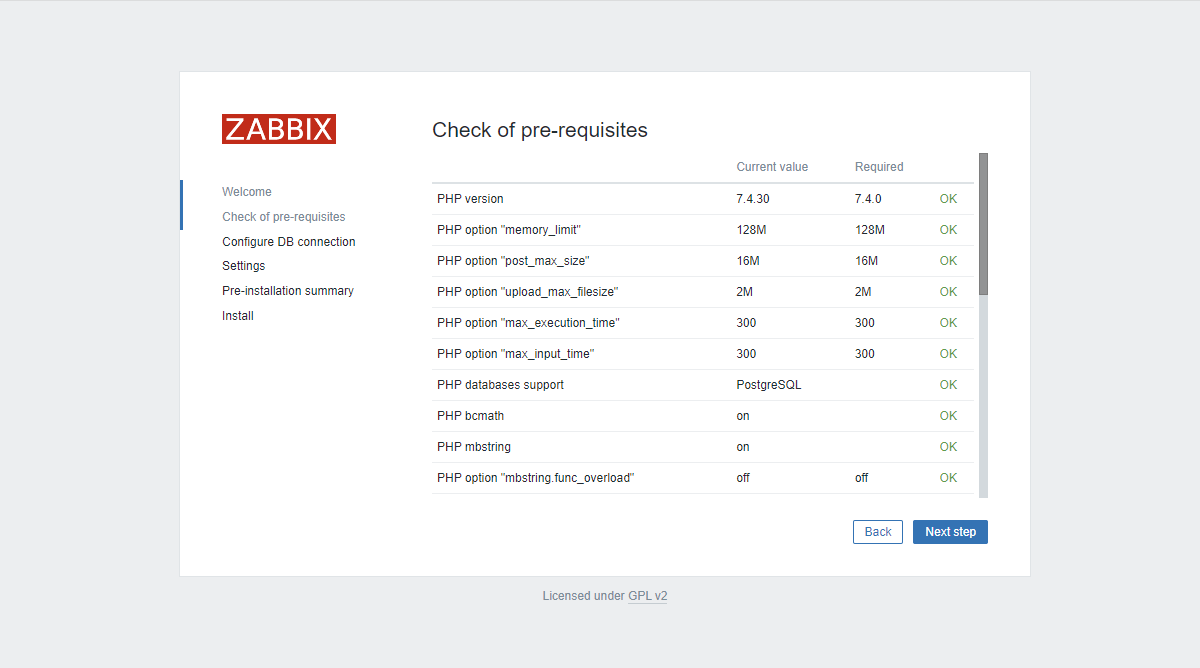
On this page, fill in the Password field, nothing else needs to be changed. When finished, click on Next step button.
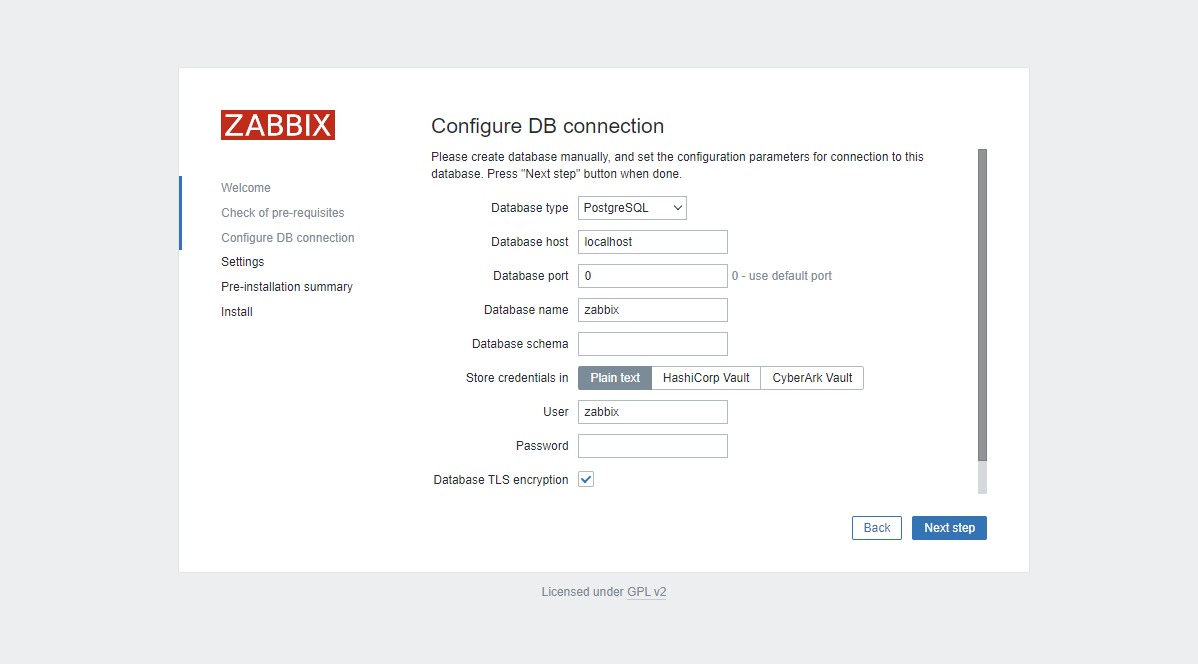
Fill in the basic settings, i.e. server name and time zone, and then click Next step to continue to the configuration summary.

Check the entered values and click Next step to complete the installation.
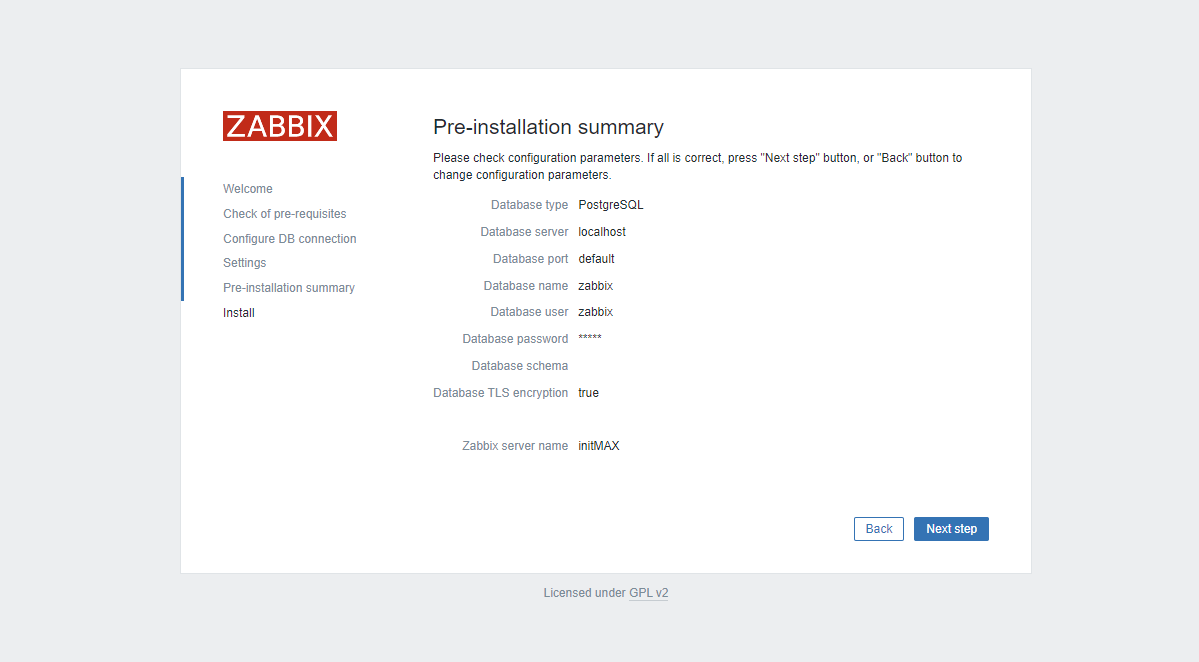
Click Finish to go to the login screen.

Log in and can start using Zabbix 6.2 (Admin/zabbix).

After logging in, you’re welcomed with all the new Zabbix 6.2!
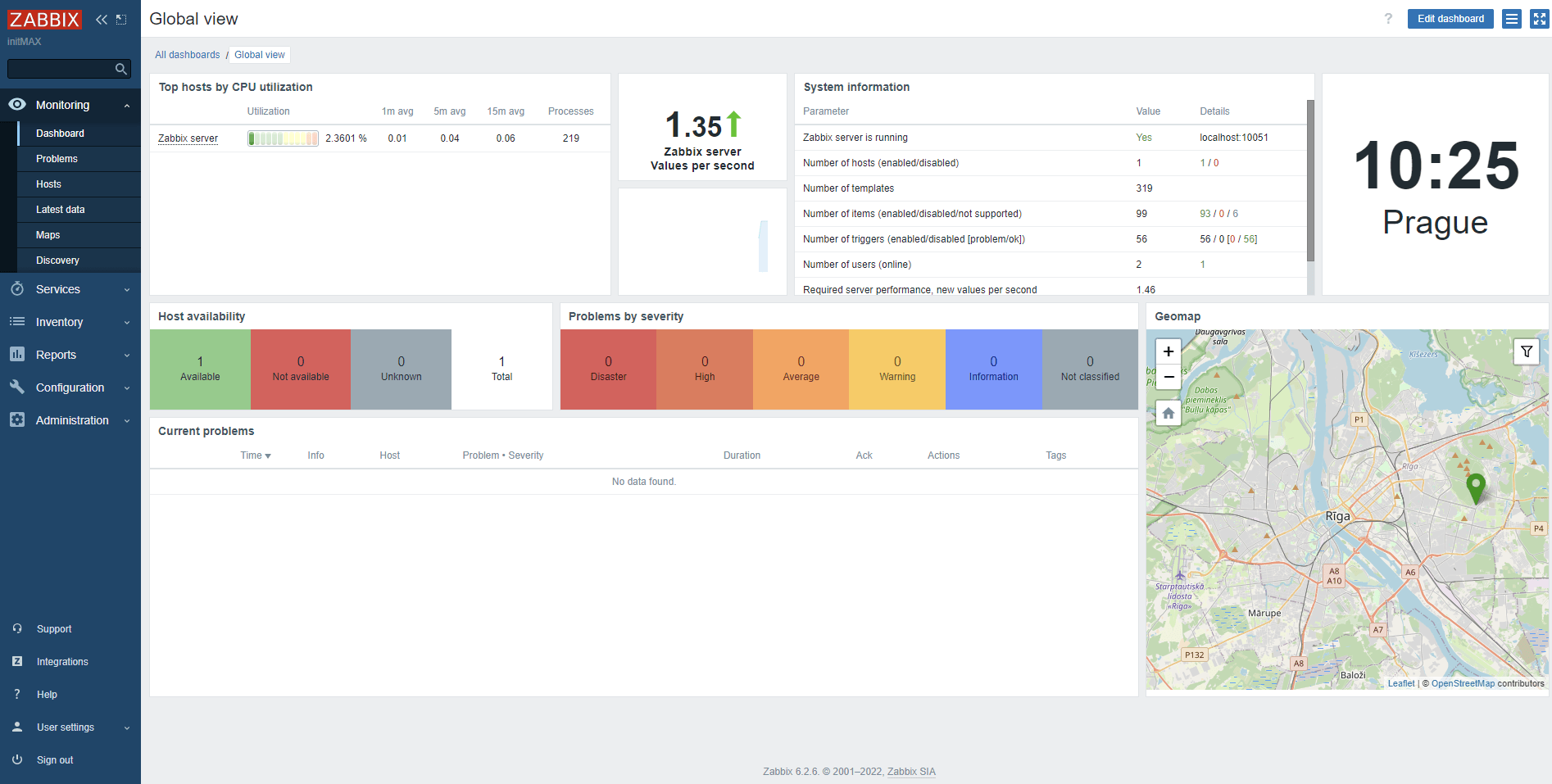
Configuration of Zabbix reporting
To use the reporting functions, you must first install Google Chrome.
First, download and install the installation package.
wget https://dl.google.com/linux/direct/google-chrome-stable_current_x86_64.rpm
dnf localinstall google-chrome-stable_current_x86_64.rpmNext, adjust the “Frontend URL” parameter in the configuration of the Zabbix frontend to the current value, this setting can be found in the following path in the menu:
Administration -> General -> OtherYou can see an example of the settings in the image below.
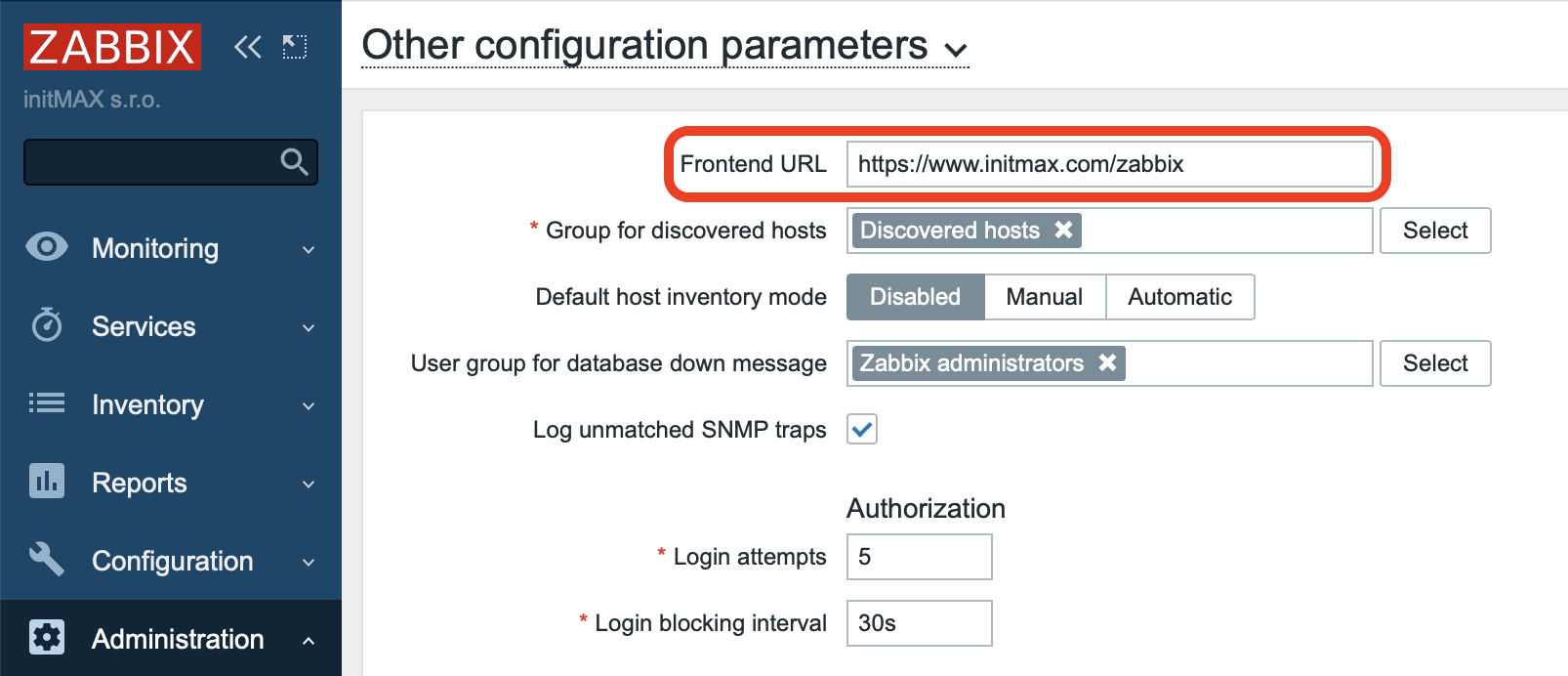

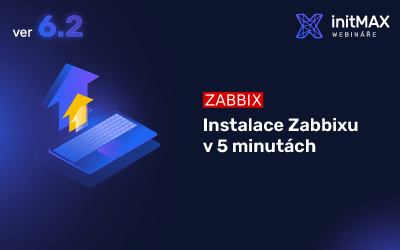
Give us a Like, share us, or follow us 😍
So you don’t miss anything: